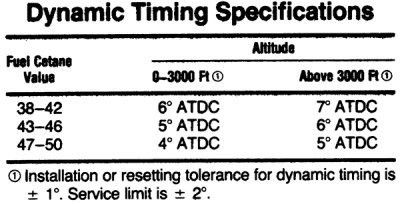This from a fuels Engineer.
While we’re on the subject of fuels, let’s discuss another common question. What is cetane?
Cetane is to diesel fuel what octane is to gasoline. It is a measure of the fuel’s ignition quality and performance. Cetane is actually a hydrocarbon chain, its real name is 1-hexadecane. It is written as C16H34, or a chain of 16 carbon atoms with 34 hydrogen atoms attached. All HC chains are also referred to as paraffins. Cetane is a hydrocarbon molecule that ignites very easily under compression, so it was assigned a rating of 100. All the hydrocarbons in diesel fuel are indexed to cetane as to how well they ignite under compression. There is very little actual cetane in diesel fuel.
All the hydrocarbons in diesel fuel have similar ignition characteristics as cetane. Cetane is abbreviated as CN. A very loose way to think about cetane is if the fuel has a CN of 45, then the fuel will ignite 45% as well as 100% cetane. Diesel engines run just fine with a CN between 45 to 50. There is no performance or emission advantage to keep raising the CN past 50. After that point the fuel’s performance hits a plateau.
Diesel at the pump can be found in two CN ranges: 40-46 for regular diesel, and 45-50 for premium. The minimum CN at the pump is supposed to be 45. The legal minimum cetane rating for #1 and #2 diesel is 40. Most diesel fuel leaves the refinery with a CN of around 42. The CN rating depends on the crude oil the fuel was refined from. It varies so much from tanker to tanker that a consistent CN rating is almost impossible. Distilling diesel is a crude process compared with making gasoline. Gasoline is more of a manufactured product with tighter standards so the octane rating is very consistent. But, the CN rating at the diesel pump can be anywhere from 42-46. That’s why there is almost never a sticker on a diesel fuel pump for CN.
Premium diesel has additives to improve CN and lubricity, detergents to clean the fuel injectors and minimize carbon deposits, water dispersant, and other additives depending on geographical and seasonal needs. More biocides added in the south in summer, more ant-gel added in the north in winter. Most retailers who sell premium diesel will have little brochures called POPs (Point of Purchase) at the counter explaining what’s in their fuel. Please don’t ask the poor clerk behind the counter any technical questions after reading this discussion. All they need to know how to do is sell you beer, milk, cigarettes, lottery tickets, and take your money.
Texaco and Amoco are two big names who sell premium diesel in limited markets. Amoco primarily sells its Premier to specialized industrial and agricultural markets. I cannot get either in my area. Most fuel retailers buy additives or buy treated fuel. In the Northern plains states, Koch is a well-known marketer of premium diesel. I buy it when I travel into Northern Wisconsin.
Because there are no legal standards for premium diesel yet, it is very hard to know if you are buying the good stuff. I have good news. An ASTM task force has drafted standards for premium diesel. When the new specifications are accepted, information will have to be posted on the fuel pump. Retailers will no longer be allowed to label cheap blended diesel as ‘premium.’ They will have separate pumps with clear labels on both informing the customer what is being sold. The marketing and labeling will be the same as with regular and premium gasoline. Retailers selling the real thing use this system now. Enforcement of all fuel standards is done at the state level in the USA


